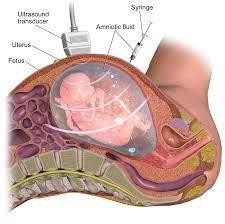A nurse is caring for a new mother who is breastfeeding her term newborn. The newborn weighed 3.4 kg (7.5 lb) at birth and weighed 3.3 kg (7.3 lb) on the second day of life. The mother expresses concern about the weight loss and asks the nurse about the amount of her breast milk. Which of the following responses by the nurse is appropriate?
"A healthy newborn can lose 6% of his birth weight before starting to gain weight."
"Why don't you switch to formula to make sure your baby is eating enough?"
"It is common for new mothers to worry that they are not making enough milk for their baby."
"Your newborn will need to remain in the hospital so his weight can be monitored."
The Correct Answer is A
Choice A rationale: Weight loss in the first few days after birth is normal for newborns, and a weight loss of up to 7-10% of the birth weight is considered within the expected range. A 6% weight loss is within normal limits, and it is reassuring to inform the mother that this is typical.
Choice B rationale: Suggesting switching to formula is not necessary based on the weight loss described. Breastfeeding provides adequate nutrition for most newborns, and early weight loss is typical and not a cause for alarm.
Choice C rationale: While it is true that new mothers may worry about breastfeeding and milk supply, this response does not address the specific weight loss concern and might not fully reassure the mother.
Choice D rationale: A 6% weight loss is within the expected range for a newborn and does not warrant hospitalization. It is a normal finding, and most newborns will start to regain their birth weight within a few days of life.
Nursing Test Bank
Naxlex Comprehensive Predictor Exams
Related Questions
Correct Answer is D
Explanation
Choice A rationale:
Going to the emergency room for black stools without abdominal pain or cramping is not warranted in this situation.
Choice B rationale:
Having the client come to the office to check things out may not be necessary since black stools can be an expected side effect of iron supplements and do not necessarily indicate a problem.
Choice C rationale:
Asking about the client's diet is a valid question, but the black stools are likely due to iron supplements' effects and not related to dietary choices.
Choice D rationale:
Black stools are a known side effect of iron supplements. When iron is broken down during digestion, it can cause the stools to appear black or dark. As the client has no other concerning symptoms like abdominal pain or cramping, this response by the nurse reassures the client that the finding is expected and not a cause for alarm.
Correct Answer is ["B","C","D","E"]
Explanation
Choice A rationale: Cephalopelvic disproportion is a condition where the baby's head is too large or the mother's pelvis is too small for a vaginal delivery. Amniocentesis does not provide information about this condition.
Choice B rationale: Amniocentesis can be used to detect neural tube defects such as spina bifida and anencephaly.
Choice C rationale: Rh incompatibility occurs when the mother is Rh-negative, and the fetus is Rh-positive. This can lead to hemolytic disease of the newborn (HDN) if untreated. While Rh incompatibility can be detected through blood tests (maternal blood), amniocentesis is typically not used to diagnose this condition.
Choice D rationale: Amniocentesis can be used to determine the fetal gender by analyzing the DNA in the amniotic fluid. This is not the primary purpose of amniocentesis, but it can certainly identify the gender, especially in cases where this information is needed for medical reasons, such as gender-linked genetic disorders.
Choice E rationale: Amniocentesis is commonly used to screen for chromosomal abnormalities such as Down syndrome (trisomy 21) and other genetic conditions.

Whether you are a student looking to ace your exams or a practicing nurse seeking to enhance your expertise , our nursing education contents will empower you with the confidence and competence to make a difference in the lives of patients and become a respected leader in the healthcare field.
Visit Naxlex, invest in your future and unlock endless possibilities with our unparalleled nursing education contents today
Report Wrong Answer on the Current Question
Do you disagree with the answer? If yes, what is your expected answer? Explain.
Kindly be descriptive with the issue you are facing.
